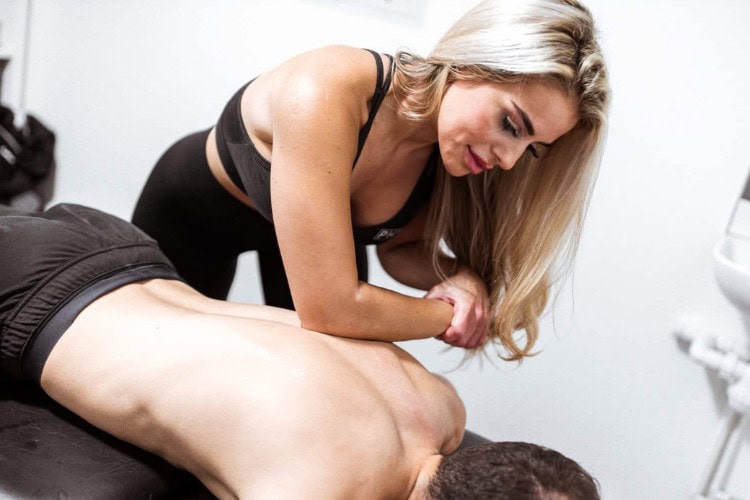Table of Contents
Main Takeaways
- Powerful techniques for pain relief: Deep tissue massage uses firm strokes to treat chronic pain, improve mobility, and target deep muscle layers.
- Effective methods tailored to you: Techniques like stripping, friction, trigger point therapy, and myofascial release address specific conditions like tension, adhesions, and limited range of motion.
- Supports faster healing: By improving blood flow and breaking down scar tissue, these therapies accelerate recovery from sports injuries, surgeries, and chronic issues.
- Expert care at One Body LDN: Therapists offer personalised treatment plans backed by experience, clinical knowledge, and acceptance of major private health insurance providers.
- Maximise results post-massage: Stay hydrated, avoid strenuous activity, and schedule regular sessions to maintain benefits and support long-term recovery.
Introduction: The Power of Deep Tissue Massage Techniques
Deep tissue massage is a powerful therapy designed to target chronic muscle tension, pain, and mobility issues. Unlike standard relaxation massage, which focuses on gentle strokes and stress relief, deep tissue massage uses firm pressure and slow strokes to reach deeper muscle layers and connective tissues.
This method is particularly beneficial for those recovering from injuries, surgery, or prolonged muscle tension.
If you are looking for the best deep tissue massage techniques in London, understanding the various methods used by expert therapists can help you make an informed decision. This guide covers the most effective techniques and their benefits in promoting pain relief and muscle recovery.
Most Effective Deep Tissue Massage Techniques Used in London

1. Stripping: Deep Strokes Along Muscle Fibres
Stripping is one of the most commonly used techniques in deep tissue massage. It involves applying long, deep strokes along the length of the muscle fibres to:
- Break down tight muscle bands.
- Improve blood circulation and oxygen supply.
- Reduce muscle stiffness and pain.
2. Friction: Breaking Down Adhesions and Scar Tissue
Friction massage is a technique that uses deep, circular movements to break down adhesions (tight knots in the muscle) and scar tissue. This technique is particularly effective for:
- Treating chronic pain conditions like tendonitis.
- Improving range of motion and flexibility.
- Reducing stiffness in post-surgical recovery.
3. Trigger Point Therapy: Relieving Muscle Knots and Tension
Trigger points, commonly known as muscle knots, can cause pain and restrict movement. Trigger point therapy involves applying direct pressure on these tender spots to release tension and restore normal function. This method is beneficial for:
- Relieving headaches, lower back pain, and neck stiffness.
- Reducing referred pain (pain felt in other areas of the body).
- Improving muscle coordination and balance.
4. Myofascial Release: Stretching Fascia to Improve Mobility
Myofascial release targets the fascia, a connective tissue that surrounds muscles and organs. When fascia becomes tight due to injury or poor posture, it can restrict movement and cause discomfort. Myofascial release therapy involves gentle sustained pressure and stretching movements to:
- Increase flexibility and mobility.
- Reduce chronic pain and tension.
- Improve postural alignment and muscle function.
How Deep Tissue Massage Techniques Help with Recovery & Pain Relief

Reducing Muscle Tension
Deep tissue massage effectively releases muscle tension by breaking down tight bands and adhesions that restrict movement. Studies show that deep tissue therapy can reduce pain levels by up to 50% in patients with chronic musculoskeletal conditions.
Restoring Movement Patterns
Chronic pain and injury often lead to compensatory movement patterns, which can cause further strain. By using targeted deep tissue techniques, therapists at One Body LDN help restore normal joint mobility and muscular function.
Accelerating Healing
Improved circulation from deep tissue massage delivers essential nutrients and oxygen to injured tissues, promoting faster healing. It is particularly effective for conditions such as sports injuries, fibromyalgia, and post-surgical recovery.
Why Choose One Body LDN for the Best Deep Tissue Massage in London?

Our Expert Therapists and Personalised Treatment Plans
At One Body LDN, we pride ourselves on offering world-class deep tissue massage therapy tailored to each client’s needs. Our expert therapists specialise in:
- Targeted pain relief treatments for sports injuries, chronic pain, and postural imbalances.
- Personalised care plans based on your medical history and specific concerns.
- Private health insurance coverage with Bupa, AXA PPP, Cigna, WPA, and Healix.
Book a Deep Tissue Massage & Experience the Best Techniques
Whether you need relief from muscle pain, improved mobility, or enhanced recovery, One Body LDN is here to help. Our therapists use advanced deep tissue massage techniques to provide long-lasting results.
👉 Book your deep tissue massage today or schedule a free consultation to discuss your treatment plan with one of our experts.
Sports Massage FAQs
How often should I get a deep tissue massage?
For chronic pain or injury recovery, weekly or bi-weekly sessions are recommended. For general maintenance, once a month is effective.
Is deep tissue massage painful?
Deep tissue massage can cause some discomfort, especially when working on tight muscles. However, therapists at One Body LDN adjust the pressure based on your comfort level.Check out this blog for more information Dealing with Pain After Deep Tissue Massage.
Can deep tissue massage help with post-surgical recovery?
Yes, deep tissue massage improves circulation, breaks down scar tissue, and enhances mobility, making it highly effective for post-surgical rehabilitation.
Does private health insurance cover deep tissue massage?
Many private health insurers, including Bupa, AXA PPP, Cigna, WPA, and Healix, cover deep tissue massage as part of physiotherapy and rehabilitation.
What should I do after a deep tissue massage?
Drink plenty of water, engage in light stretching, and avoid intense workouts for 24–48 hours to allow your muscles to recover fully.



